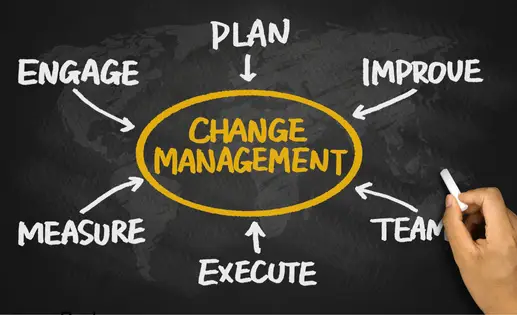AI Is Transforming Business, But Without Change Leadership, We Risk Losing the One Thing AI Cannot Replace

Artificial intelligence is transforming the workplace faster than anyone expected. Speed, precision and efficiency have never been easier to achieve. Yet beneath the excitement sits a challenge many leaders are overlooking: as AI becomes more capable, people risk relying on it before they’ve built the skills that set professionals apart.
AI can produce polished work in seconds, but it cannot develop judgement, influence, confidence or the insight that comes from real experience. When people skip straight to refined output, they also skip the learning that shapes capability. The result is a growing gap between how skilled someone appears and how skilled they actually are.
The organisations that succeed in this new landscape recognise a simple truth: AI should lift people, not replace their growth. Human centred leadership ensures teams stay intentional, think for themselves and use AI in ways that strengthen, not dilute, capability. This is where real advantage is created.
Beyond the Dashboard: Why Change Success Can’t Be Measured in Clicks

It’s easy to celebrate numbers that look good: 100% trained, 100% logged in, a “smooth” launch. But numbers don’t tell you if the change is truly working. Real progress shows up in how people behave, not just what the dashboard displays.
At Enable Change Partners, we look beyond completion rates to what really matters: confidence, capability, and connection. Because meaningful change doesn’t live in reports. It lives in people.
What is Change Management?

Change management is about helping people adjust when the way they work shifts, whether through new systems, processes, or rules. Too often, organisations focus on technology and procedures while overlooking the people who need to adapt. When employees are not supported, resistance grows, morale drops, and projects stall. At Enable Change Partners, we focus on every dimension of change: social, behavioural, emotional, physical, and technical. By training staff, coaching leaders, and providing ongoing support, we help organisations of any size embed new ways of working smoothly. The result is faster adoption, reduced resistance, and employees who feel engaged, valued, and capable of thriving in the future.
Balancing Speed with Stability in Change

When disruption becomes the norm, speed feels like the only answer. New technologies, shifting markets, and tighter budgets push leaders to deliver results almost overnight.
But moving too fast without the right structures comes at a cost. Engagement drops, accountability blurs, communication falters, and resistance builds. What starts as urgency can quickly stall into rework and frustration.
That is why guardrails matter. At Enable Change Partners, we see them not as brakes, but as enablers. Experienced Change Managers provide these safeguards. They help leaders set the right pace, reduce risks, and keep people engaged so transformation delivers without breaking the business.
At ECP, we are often called the guardians of momentum. We help organisations move at the pace they need, while keeping change human, resilient, and sustainable.
8 Essential Steps to Humanise Organisational Change

Organisational change succeeds when it is humanised. Too often, change efforts focus on processes and structures while overlooking the people who bring them to life. Employees are not just resources; they are individuals with hopes, fears, and valuable insights. Involving them early, listening with intent, communicating with clarity, and creating safe spaces for honest feedback fosters trust and engagement. When people feel valued and supported, resistance turns into advocacy and compliance becomes genuine enthusiasm. By equipping teams with the right tools, empowering leaders to show empathy, and building a culture of adaptability, organisations can transform change from a top-down mandate into a shared journey of growth and innovation.
What’s the Best Way to Communicate Change?

Effective communication during change is not about rigid rules or one-size-fits-all solutions. With rapid digital adoption, evolving customer expectations, and diverse teams, flexibility is the real key. Some employees prefer emails, others value face-to-face conversations, while many respond best to videos or interactive sessions. The role of a leader is to know the audience, personalise messages, and make them meaningful by showing what change means for each person. When communication is authentic, consistent, and emotionally connected, stakeholders feel part of the journey rather than passive recipients of information. This flexible approach not only builds trust and engagement but also strengthens adoption and long-term success.
What’s the True Cost of Fast-Tracked Change?

Rushing change may deliver quick wins, but it often comes at a hidden cost to employees’ well-being, psychological safety, and long-term morale. Without a clear strategy and a focus on people, rapid change can lead to stress, burnout, and resistance that undermine adoption and productivity. Successful transformation requires balance: a clear vision, strong stakeholder engagement, expert guidance, and a people-centred approach that supports resilience. When change is thoughtful and inclusive, organisations achieve both speed and sustainability, creating lasting agility without sacrificing their people in the process.
Creating a Change Culture That Lasts

No matter how well-designed your strategy is, lasting change depends on culture. If people are not engaged, every project becomes a struggle. Building a change culture means leading by example, involving employees at every stage, communicating openly, and investing in skills that build confidence and resilience. It also means embedding change into policies and everyday practices so it becomes part of the organisation’s DNA, not a one-off event. Recognising effort and celebrating milestones reinforces commitment and shows people their contributions matter. When trust, communication, and involvement are prioritised, change shifts from being a top-down directive to a shared journey that creates agility, resilience, and long-term success.
How does Change make you feel

Change can feel overwhelming under the weight of tight budgets, deadlines, and expectations, but meaningful change is about more than simply getting through the process. It requires a clear strategy that challenges the status quo, frameworks tailored to the organisation, and a structured approach that builds confidence and keeps everyone aligned. At its core, success lies in company culture, where employees are empowered as champions, involved in the journey, and given a sense of ownership. By learning from others, measuring progress, and continuously evolving, organisations can move beyond short-term fixes to long-lasting transformation. When change is purposeful and people are engaged, it not only sticks but also creates a culture of growth, resilience, and lasting impact.
Empowering Change: The Human Approach to Successful Stakeholder Engagement

Effective stakeholder engagement is the cornerstone of successful change management. When organisations take the time to understand their stakeholders, communicate transparently, and involve the right people at the right time, change becomes far more sustainable. Leadership buy-in, subject matter experts, and change champions all play critical roles in building trust, fostering collaboration, and reducing resistance. By investing in training, supporting emotional well-being, and creating a culture of openness, organisations not only improve adoption rates but also strengthen resilience for the future. Ultimately, change succeeds when people feel heard, valued, and empowered to contribute to the journey.
